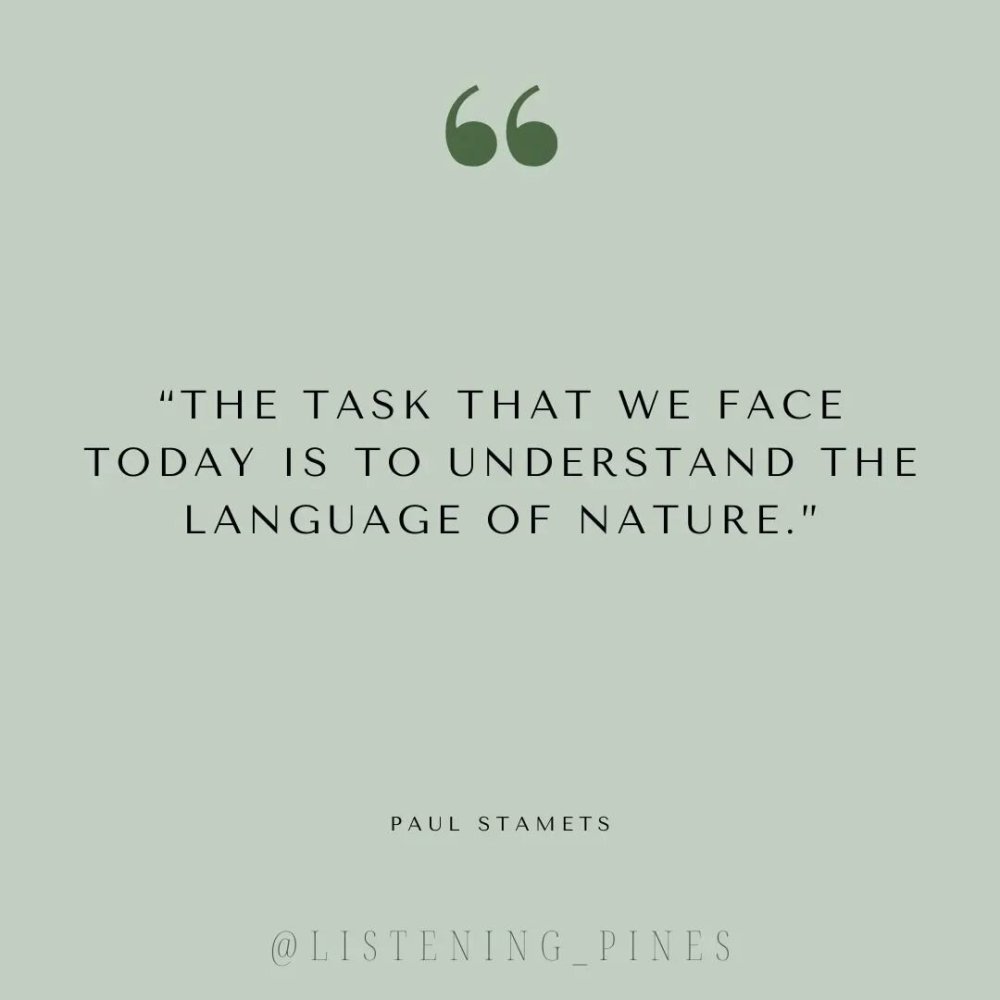David Baxter PhD
Late Founder
Can forest therapy enhance health and well-being? by Susan Abookire, BSEE, MD, MPH, FACP, Harvard Health Blog
May 29, 2020

The beauty of the outdoors naturally encourages people to go outside, inhale fresh air, listen to the birds, take a walk, or watch the wind animate the branches of the steadfast neighboring trees. The pull toward the natural world is present even in normal times. Now, as we’re confined indoors by the coronavirus pandemic, often spending hours in front of inanimate screens, the urge to be outside is ever more acute. One way to satisfy these urges while improving our health and well-being is forest therapy, a practice growing in popularity around the world.
What is forest therapy?
Inspired by the Japanese practice of shinrin-yoku, or “forest bathing,” forest therapy is a guided outdoor healing practice. Unlike a hike or guided nature walk aimed at identifying trees or birds, forest therapy relies on trained guides, who set a deliberately slow pace and invite people to experience the pleasures of nature through all of their senses. It encourages people to be present in the body, enjoying the sensation of being alive and deriving profound benefits from the relationship between ourselves and the rest of the natural world.
Shinrin-yoku started in Japan in the 1980s in response to a national health crisis. Leaders in Japan noticed a spike in stress-related illnesses, attributed to people spending more time working in technology and other industrial work. Certified trails were created to guide people in outdoor experiences. Decades of research show that forest bathing may help reduce stress, improve attention, boost immunity, and lift mood.
How does forest therapy affect the body?
Stress raises levels of the hormone cortisol. Long-term stress and chronic elevations in cortisol play a role in high blood pressure, heart disease, headaches, and many other ailments. In test subjects, levels of cortisol decreased after a walk in the forest, compared with people who walked in a laboratory setting.
Trees give off volatile essential oils called phytoncides that have antimicrobial properties and may influence immunity. One Japanese study showed a rise in number and activity of immune cells called natural killer cells, which fight viruses and cancer, among people who spent three days and two nights in a forest versus people who took an urban trip. This benefit lasted for more than a month after the forest trip!
Don’t worry if you don’t have three days to spend in the forest. A recent study in the United Kingdom of nearly 20,000 people showed that spending at least 120 minutes a week in nature improved self-reported health and well-being. It doesn’t matter whether the 120 minutes represents one long trip, or several shorter visits to nature. So, even as we are honoring physical distancing, we can get outside for 20 minutes every day and enhance our well-being.
Some research suggests exposure to natural tree oils helps lift depression, lowers blood pressure, and may also reduce anxiety. Tree oils also contain 3-carene. Studies in animals suggest this substance may help lessen inflammation, protect against infection, lower anxiety, and even enhance the quality of sleep.
Even people confined to a hospital bed may benefit from viewing nature. A small study published decades ago compared people who recovered from gallbladder surgery in a room with a window onto a natural outdoor view with people who recovered from the same surgery in a hospital room with a view of a brick wall. People who could see nature recovered more quickly and needed less powerful pain medication than people who could not see nature.
And one intriguing study found benefit in green roofs. Participants were asked to look at nature in a green roof or concrete for 40 seconds while the researchers measured attention. According to this study, green spaces are restorative and boost attention, while viewing concrete worsens attention during tasks.
Finding a forest therapy guide
The Association of Nature and Forest Therapy trains and certifies forest therapy guides across the world. Guides help people forge a partnership with nature through a series of invitations that allow participants to become attentive to the forest, to deepen their relationship with nature, and allow the natural world to promote healing and well-being.
Ultimately, guides support what the forests have to offer us, inviting participants into practices that deepen physical presence, pleasure, and partnership with nature. When we connect with nature in this way, we are connecting with ourselves.
May 29, 2020

The beauty of the outdoors naturally encourages people to go outside, inhale fresh air, listen to the birds, take a walk, or watch the wind animate the branches of the steadfast neighboring trees. The pull toward the natural world is present even in normal times. Now, as we’re confined indoors by the coronavirus pandemic, often spending hours in front of inanimate screens, the urge to be outside is ever more acute. One way to satisfy these urges while improving our health and well-being is forest therapy, a practice growing in popularity around the world.
What is forest therapy?
Inspired by the Japanese practice of shinrin-yoku, or “forest bathing,” forest therapy is a guided outdoor healing practice. Unlike a hike or guided nature walk aimed at identifying trees or birds, forest therapy relies on trained guides, who set a deliberately slow pace and invite people to experience the pleasures of nature through all of their senses. It encourages people to be present in the body, enjoying the sensation of being alive and deriving profound benefits from the relationship between ourselves and the rest of the natural world.
Shinrin-yoku started in Japan in the 1980s in response to a national health crisis. Leaders in Japan noticed a spike in stress-related illnesses, attributed to people spending more time working in technology and other industrial work. Certified trails were created to guide people in outdoor experiences. Decades of research show that forest bathing may help reduce stress, improve attention, boost immunity, and lift mood.
How does forest therapy affect the body?
Stress raises levels of the hormone cortisol. Long-term stress and chronic elevations in cortisol play a role in high blood pressure, heart disease, headaches, and many other ailments. In test subjects, levels of cortisol decreased after a walk in the forest, compared with people who walked in a laboratory setting.
Trees give off volatile essential oils called phytoncides that have antimicrobial properties and may influence immunity. One Japanese study showed a rise in number and activity of immune cells called natural killer cells, which fight viruses and cancer, among people who spent three days and two nights in a forest versus people who took an urban trip. This benefit lasted for more than a month after the forest trip!
Don’t worry if you don’t have three days to spend in the forest. A recent study in the United Kingdom of nearly 20,000 people showed that spending at least 120 minutes a week in nature improved self-reported health and well-being. It doesn’t matter whether the 120 minutes represents one long trip, or several shorter visits to nature. So, even as we are honoring physical distancing, we can get outside for 20 minutes every day and enhance our well-being.
Some research suggests exposure to natural tree oils helps lift depression, lowers blood pressure, and may also reduce anxiety. Tree oils also contain 3-carene. Studies in animals suggest this substance may help lessen inflammation, protect against infection, lower anxiety, and even enhance the quality of sleep.
Even people confined to a hospital bed may benefit from viewing nature. A small study published decades ago compared people who recovered from gallbladder surgery in a room with a window onto a natural outdoor view with people who recovered from the same surgery in a hospital room with a view of a brick wall. People who could see nature recovered more quickly and needed less powerful pain medication than people who could not see nature.
And one intriguing study found benefit in green roofs. Participants were asked to look at nature in a green roof or concrete for 40 seconds while the researchers measured attention. According to this study, green spaces are restorative and boost attention, while viewing concrete worsens attention during tasks.
Finding a forest therapy guide
The Association of Nature and Forest Therapy trains and certifies forest therapy guides across the world. Guides help people forge a partnership with nature through a series of invitations that allow participants to become attentive to the forest, to deepen their relationship with nature, and allow the natural world to promote healing and well-being.
Ultimately, guides support what the forests have to offer us, inviting participants into practices that deepen physical presence, pleasure, and partnership with nature. When we connect with nature in this way, we are connecting with ourselves.

:extract_focal()/https%3A%2F%2Fpocket-syndicated-images.s3.amazonaws.com%2Farticles%2F4807%2F1592845865_open-up-say-awe_h.jpg)



